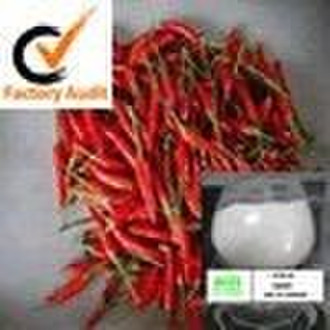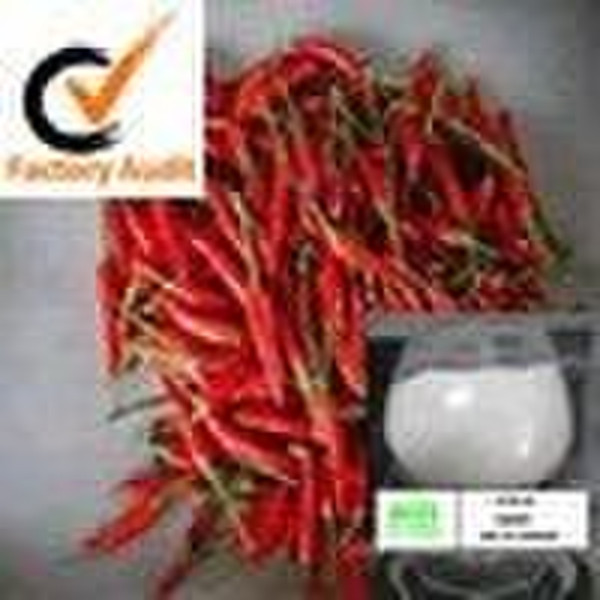Catalog
-
Catalog
- Agriculture
- Apparel
- Automobiles & Motorcycles
- Beauty & Personal Care
- Business Services
- Chemicals
- Construction & Real Estate
- Consumer Electronics
- Electrical Equipment & Supplies
- Electronic Components & Supplies
- Energy
- Environment
- Excess Inventory
- Fashion Accessories
- Food & Beverage
- Furniture
- Gifts & Crafts
- Hardware
- Health & Medical
- Home & Garden
- Home Appliances
- Lights & Lighting
- Luggage, Bags & Cases
- Machinery, Hardware & Tools
- Measurement & Analysis Instruments
- Mechanical Parts & Fabrication Services
- Minerals & Metallurgy
- Office & School Supplies
- Packaging & Printing
- Rubber & Plastics
- Security & Protection
- Service Equipment
- Shoes & Accessories
- Sports & Entertainment
- Telecommunications
- Textiles & Leather Products
- Timepieces, Jewelry, Eyewear
- Tools
- Toys & Hobbies
- Transportation
Filters
Search
Capsaicin

Zhizheng Du
Contact person
Basic Information
Chemical Name: Capsaicin CAS Number: 404-86-4 Molecular Formula: C18H27NO3 Molecular Weight: 305.41 Purity: 10%-99% Appearance: Off white powder Application/Function: Capsaicin is the active component of chili peppers, which are plants belonging to the genus Capsicum. Capsaicin is currently used in topical ointments to relieve the pain of peripheral neuropathy such as post-herpetic neuralgia caused by shingles. It may be used in concentrations of between 0.025% and 0.075%. It may be used as a cream for the temporary relief of minor aches and pains of muscles and joints associated with arthritis, simple backache, strains and sprains. The treatment typically involves the application of a topical anesthetic until the area is numb. Recently, capsaicin is being tested for the prevention of pain post surgery. David Julius, a physiology professor at the University of California, San Francisco, recently discovered that capsaicin selectively binds to a protein known as TRPV1 that resides on the membranes of pain and heat sensing neurons. TRPV1 a heat activated calcium channel, with a threshold to open between 37 and 45 Celsius degrees (37 degrees is normal body temperature). When capsaicin binds to TRPV1, it causes the channel to lower its opening threshold, thereby opening it at temperatures less than the body's temperature, which is why capsaicin is linked to the sensation of heat. Prolonged activation of these neurons by capsaicin depletes presynaptic substance P, one of the body's neurotransmitters for pain and heat. Neurons that do not contain TRPV1 are unaffected. This causes extended numbness following surgery, and the patient does not feel pain as the capsaicin is applied under anesthesia. The result appears to be that the chemical mimics a burning sensation, the nerves are overwhelmed by the influx, and are unable to report pain for an extended period of time. With chronic exposure to capsaicin, neurons are depleted of neurotransmitters and it leads to reduction in sensation of pain and blockade of neurogenic inflammation. If capsaicin is removed, the neurons recover.
-
Payment Methods
We accept:









